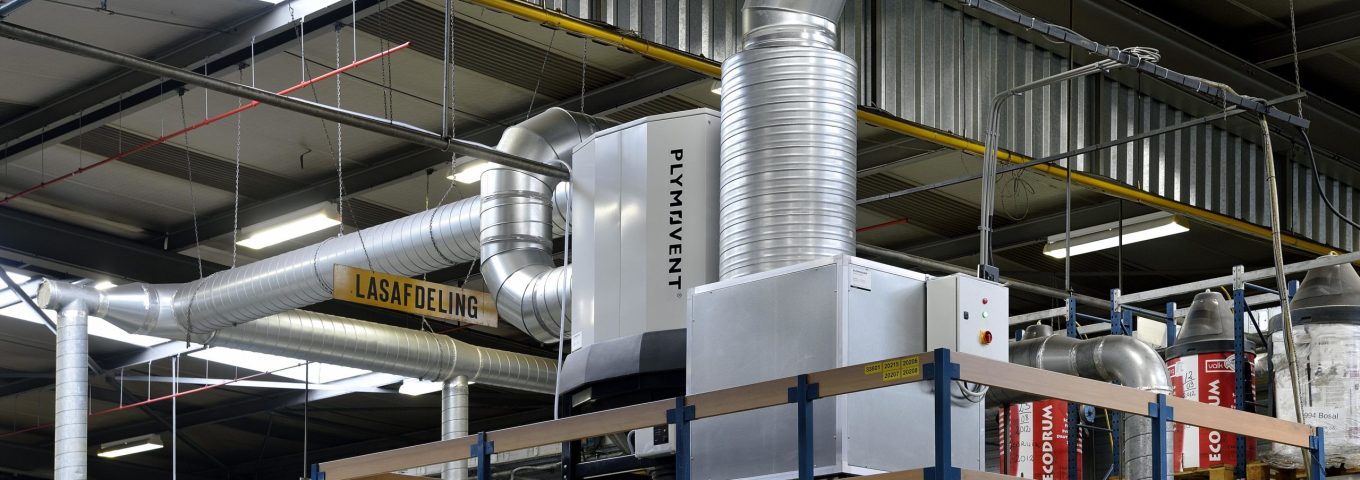What’s The Difference Between General Ventilation and LEV?
General ventilation and Local Exhaust Ventilation (LEV) are two distinct approaches to controlling and managing air quality in different industrial or occupational settings. However, both of these approaches differ greatly, and each comes with its own benefits and limitations.
This article provides an overview of general ventilation and Local Exhaust Ventilation and aims to explain each method’s applications, advantages and potential limitations.
What is General Ventilation?
General ventilation is a broad ventilation application designed to improve air quality within an indoor space by exchanging and circulating air.
How Does General Ventilation Work?
General ventilation aims to reduce the concentration of contaminants in the air by mixing the contaminated air with clean, fresh, and uncontaminated air.
As this clean, fresh air is introduced into the space, it mixes with the contaminated air, slowly diluting the number of particles to improve the overall air quality.
General ventilation systems also help regulate the working environment’s temperature and humidity levels.
Examples of general ventilation systems include natural ventilation through windows and doors, mechanical ventilation systems with fans and ducts, and HVAC (Heating, Ventilation, and Air Conditioning) systems that provide both heating and cooling while ensuring proper ventilation.
General Ventilation Applications
General ventilation is most commonly used in commercial buildings such as offices where the contaminant level is low to help maintain a healthy and comfortable indoor environment.
General Ventilation Limitations
While general ventilation is beneficial for maintaining adequate air quality, it may not be sufficient for controlling harmful airborne contaminants, such as welding fumes, in specific work areas.
What is Local Exhaust Ventilation?
Local Exhaust Ventilation (LEV) is a targeted system designed to capture and remove airborne, preventing dispersion into the broader workplace air.
LEV systems are highly effective in minimising workers’ exposure to harmful substances, such as gasses, dust, and fumes, contributing to a safer work environment.
How Does Local Exhaust Ventilation Work?
LEV systems typically consist of hoods, ducts, fans, and filters positioned close to the emission point. An LEV system captures the contaminants at the source and transports them from the work area.
Local Exhaust Ventilation Applications
LEV is commonly used in industrial settings where specific processes such as welding, milling, and sawing generate harmful airborne contaminants hazardous to human health. An LEV system is used in these environments to diminish or preferably prevent contaminant exposure.
Local Exhaust Ventilation Potential Limitations
LEV systems are designed to control and capture airborne contaminants at or near the source before they can disperse into the workplace. While LEV systems can be effective in many situations, they are not required where harmful airborne contaminants are not present.
LEV systems also require careful design, installation, and maintenance to ensure their effectiveness.
In summary, general ventilation is an ideal method for improving indoor air quality and reducing the concentration of pollutants; however, it cannot be relied on to remove contaminants or hazardous substances in specific work areas.
In contrast, LEV is a highly effective and targeted approach designed to capture and remove harmful contaminants at their source. However, an LEV system is not suitable for all workplace environments.
Both approaches play essential roles in maintaining a safe and healthy indoor environment, with their effectiveness depending on the specific requirements of the given workplace or application.

